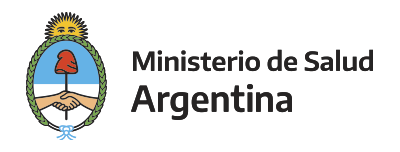Please use this identifier to cite or link to this item:
http://sgc.anlis.gob.ar/handle/123456789/2666| Title: | Intestinal parasitic infections in a community from Pampa del Indio, Chaco (Argentina) and their association with socioeconomic and environmental factors | Authors: | Scavuzzo, Carlos Periago, Maria Victoria Porcasi, X Godoy, Marcia Crudo, Favio Delgado, Cintia |
Keywords: | Parasitosis Intestinales;Argentina | Issue Date: | 29-Jun-2023 | Journal: | PLOS ONE | Series/Report no.: | PLoS ONE;18(6): e0285371 | Abstract: | Neglected tropical diseases are a group of 20 disabling diseases, which, in particular, are the most common chronic infections in the most vulnerable people. This study aimed to characterize the infection by intestinal parasites (IPs) in dwellings from a peri-urban neighborhood in Pampa del Indio, Chaco (Argentina), and its association with socioeconomic and environmental variables. Single stool samples were collected from all individuals older than 1 year through household visits and processed using coprological sedimentation and flotation techniques. Standardized questionnaires were used at the household level to collect socio-economic information. Environmental variables were obtained from the Planetscope image, Landsat 8 images and remote sensors, while land-use layers were obtained through the use of a maximum likelihood algorithm. Stool samples were provided by 314 individuals. The prevalence of IPs found was 30.6% (n = 96), with a predominance of Giardia lamblia (12.7%, n = 40) and Hymenolepis nana (7.6%, n = 24). The only soil-transmitted helminth found was Strongyloides stercoralis with a 2.5% prevalence (n = 8). Individuals of adult age (> 18 years) were 0.65 times less likely to present parasitic infections with respect to children and adolescents. The only environmental variable that was closely associated with the presence of IPs, was the Normalized Difference Water Index (NDWI), a measure of humidity; being higher around houses with positive individuals. Most of the IPs found in this study were of water-borne transmission and those transmitted directly from person-to-person, therefore fecal contamination is present. We believe that the low prevalence of STH in this area, which requires a passage through the soil, is related to the environmental characteristics, which are unsuitable for the development/permanence of the infective stages of these parasites. The geospatial data and tools used herein proved to be useful for the study of the relationship between the different factors that influence the presence of IPs in a community, from an eco-health approach. |
Description: | Fil: Carlos Matias Scavuzzo. Fundación Mundo Sano; Buenos Aires, Argentina Fil: Cintia Delgado. Fundación Mundo Sano; Buenos Aires, Argentina Fil: Marcia Goy. Hospital Dr. Dante Tardelli, Pampa del Indio; Chaco, Argentina Fil: Favio Crudo. Fundación Mundo Sano; Buenos Aires, Argentina Fil: Ximena Porcasi. Instituto de Altos Estudios Espaciales Mario Gulich. Universidad Nacional de Córdoba, Comisión Nacional de Actividades Espaciales, Córdoba, Argentina. Consejo Nacional de Investigaciones Científicas y Técnicas (CONICET); Buenos Aires, Argentina Fil: María Victoria Periago. Fundación Mundo Sano. Consejo Nacional de Investigaciones Científicas y Técnicas (CONICET); Buenos Aires, Argentina. |
URI: | http://sgc.anlis.gob.ar/handle/123456789/2666 | DOI: | 10.1371/ journal.pone.0285371 |
| Appears in Collections: | Parasitosis intestinales en Argentina |
Files in This Item:
| File | Description | Size | Format | |
|---|---|---|---|---|
| Parasitosis autor C. Scavuzzo.pdf | Español; 19 páginas | 2.65 MB | Adobe PDF | View/Open |
Page view(s)
64
checked on Nov 5, 2025
Download(s)
13
checked on Nov 5, 2025
Google ScholarTM
Check
Altmetric
Altmetric
Items in DSpace are protected by copyright, with all rights reserved, unless otherwise indicated.

